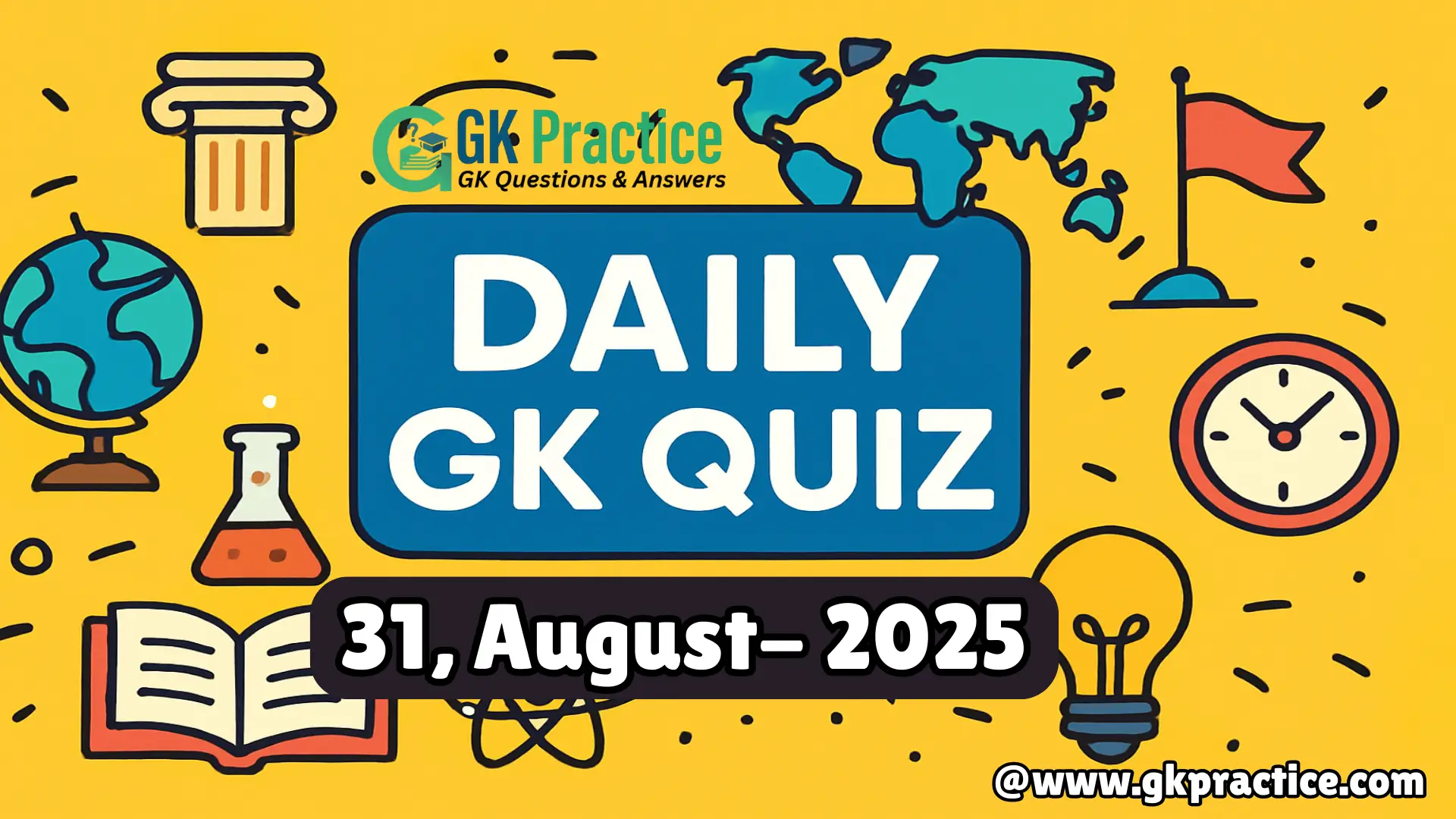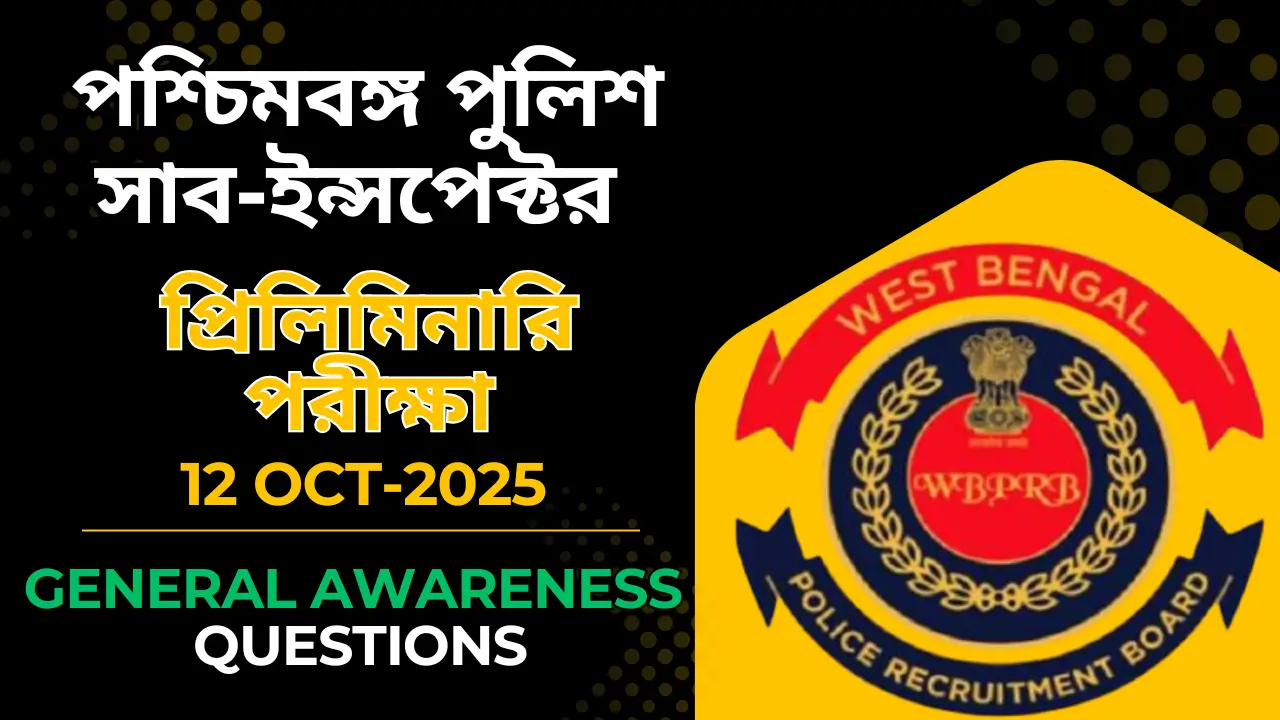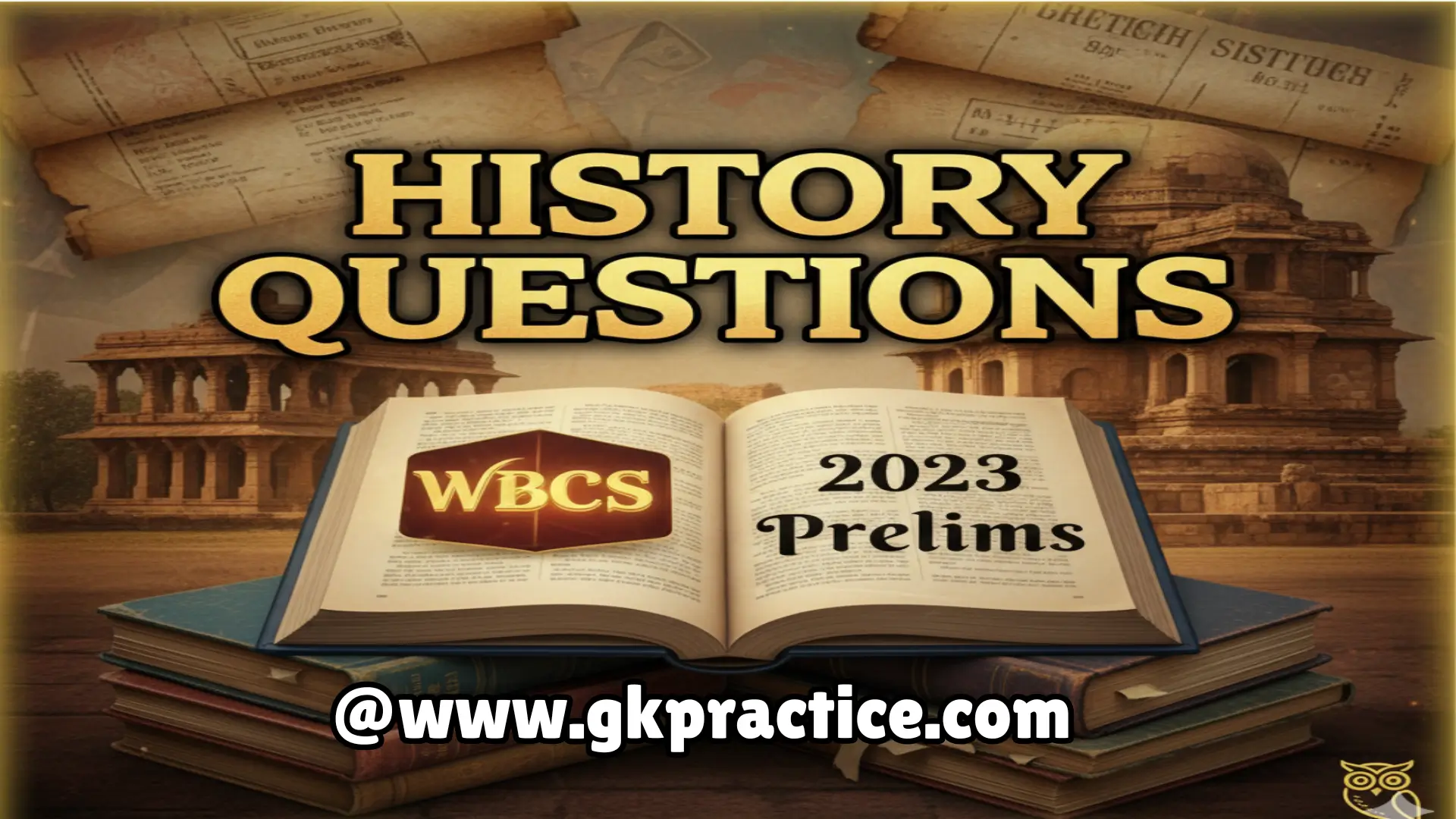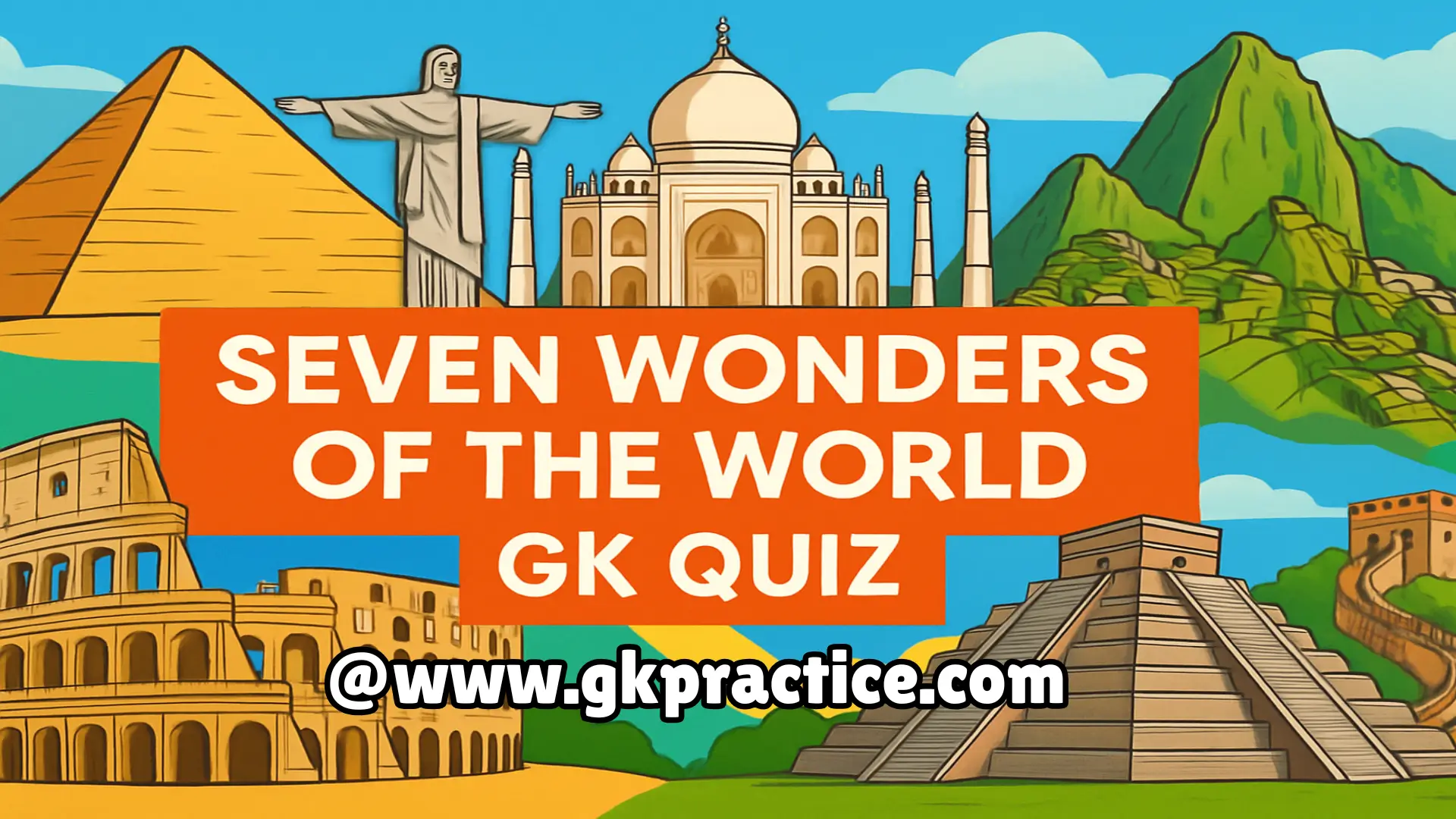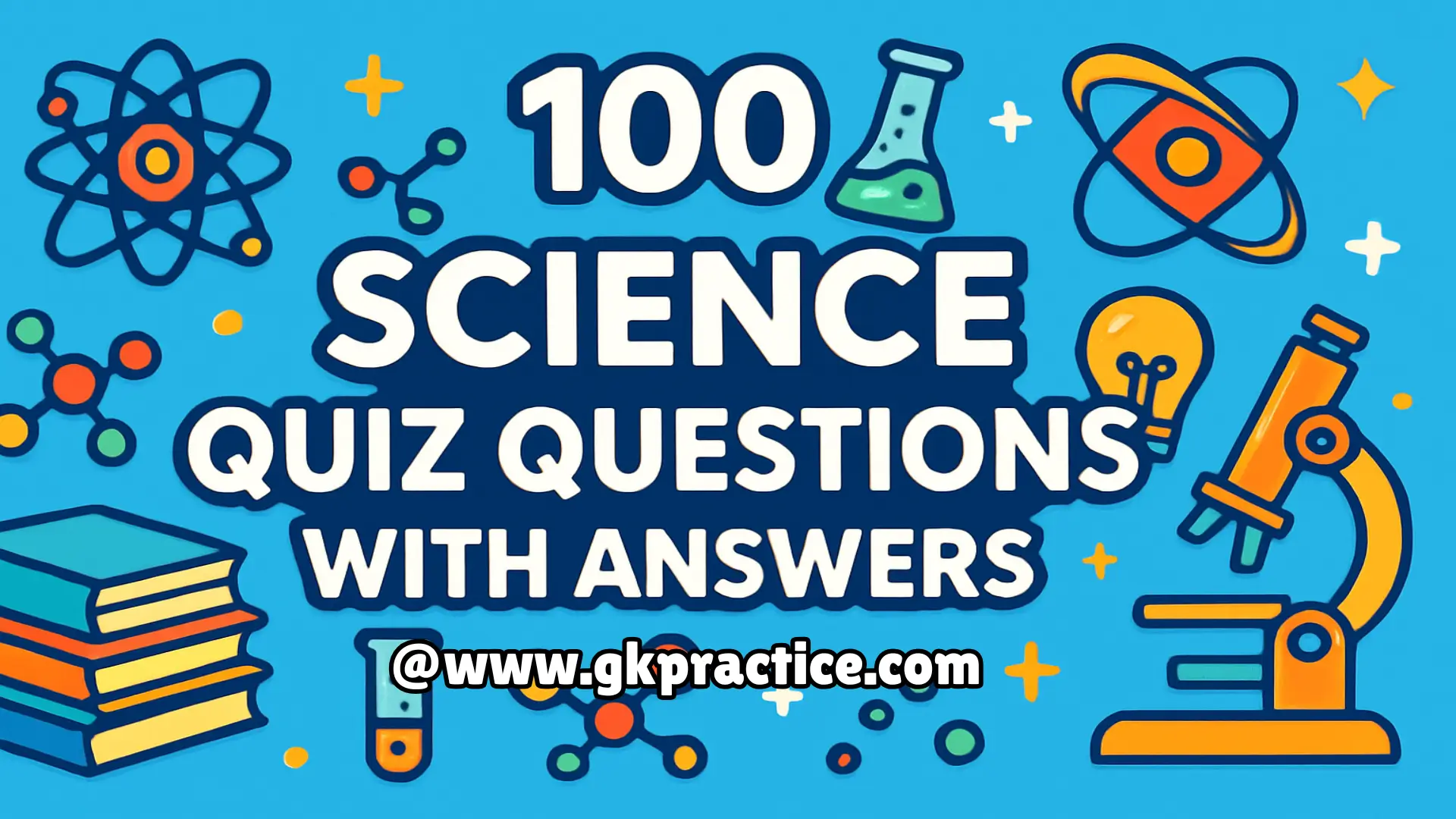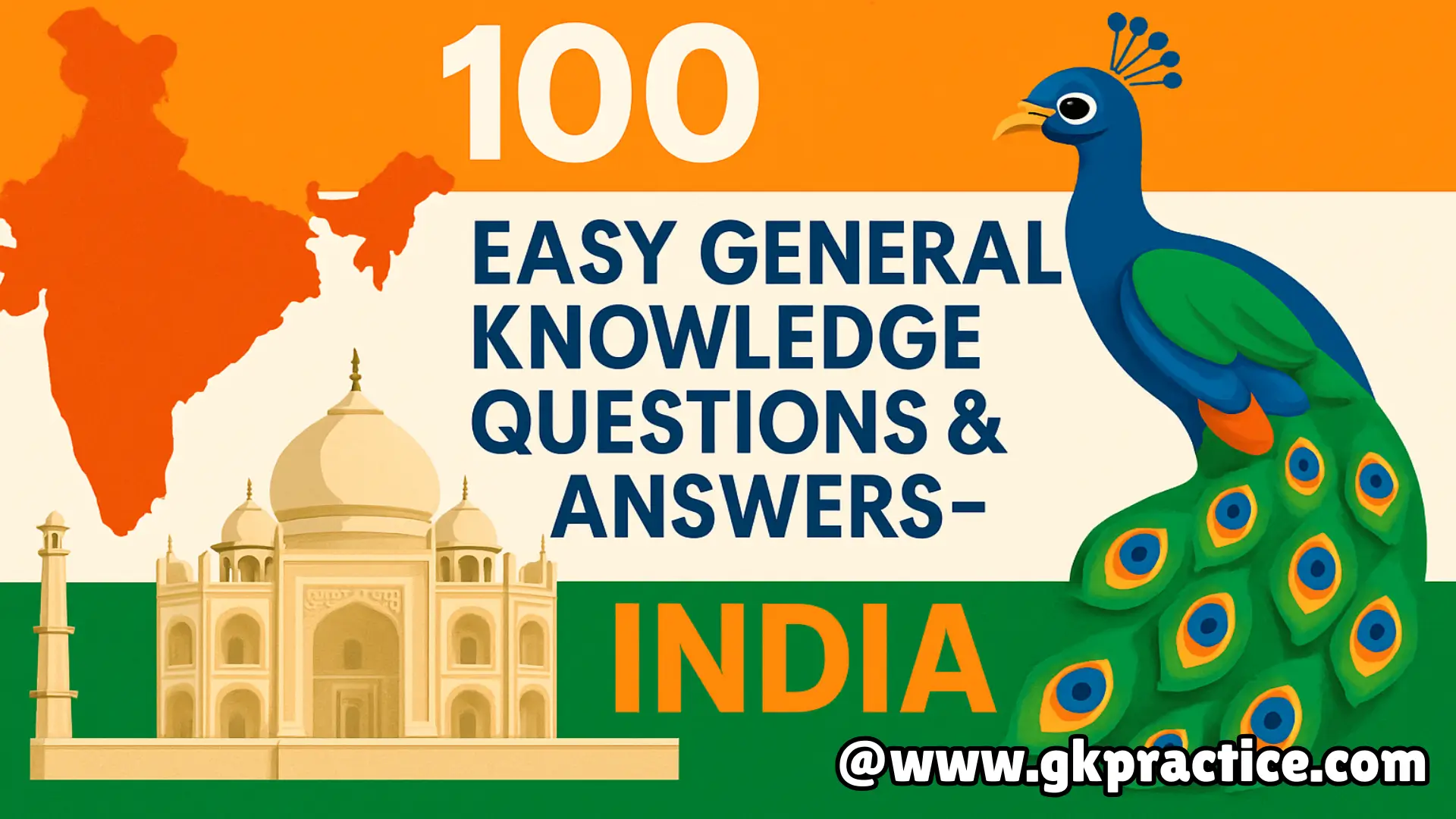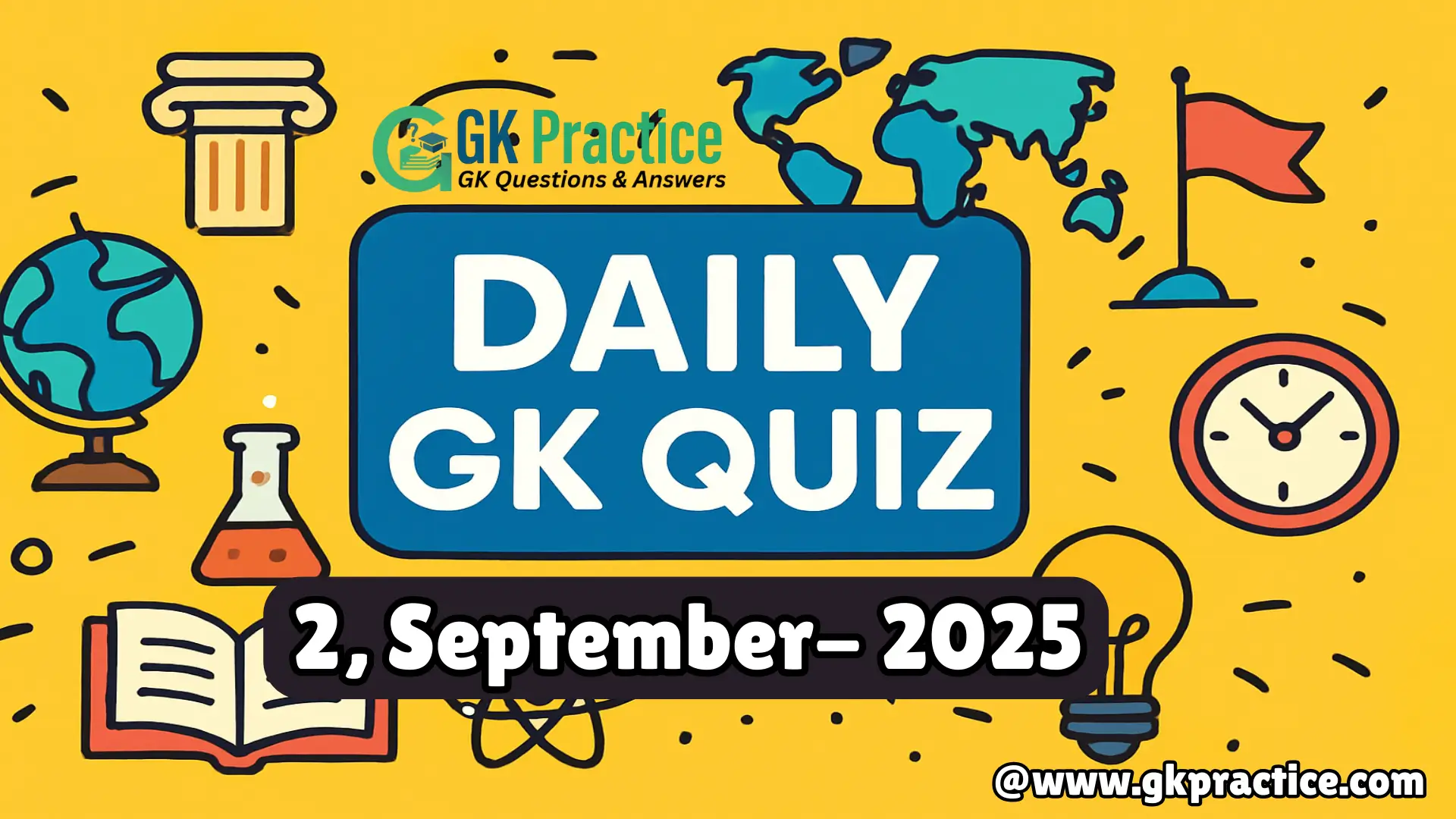Boost your exam preparation with our Daily General Knowledge Quiz. Solve fresh questions from history, geography, polity, science, current affairs, and static GK and other topics with detailed explanations. Perfect for SSC, Banking, UPSC, Railways, and other competitive exams.
Daily General Knowledge Quiz – Questions with Answers & Explanations:-
Explanation: India became a Republic on 26 January 1950 when the Constitution came into force. Dr. Rajendra Prasad was sworn in as the first President. Republic Day is celebrated annually to mark this historic transition from Dominion status to a sovereign democratic republic.
Explanation: Dr. A.P.J. Abdul Kalam is called the “Missile Man of India” for his leadership in developing India’s missile and space programs. He contributed to projects like Agni and Prithvi missiles. He later served as India’s 11th President from 2002 to 2007.
Explanation: The Meenakshi Amman Temple, located in Madurai, Tamil Nadu, is dedicated to Goddess Meenakshi (a form of Parvati) and Lord Sundareswarar (Shiva). It is renowned for its towering gopurams and intricate Dravidian architecture, attracting devotees and tourists from across the world.
Explanation: Wular Lake, located in Jammu and Kashmir, is the largest freshwater lake in India. Formed by tectonic activity, it plays an important role in flood control and supports rich biodiversity. It is fed by the Jhelum River and surrounded by scenic mountains.
Explanation: Sir Chandrasekhara Venkata Raman received the Nobel Prize in Physics in 1930 for his discovery of the “Raman Effect.” This phenomenon deals with the scattering of light and provided vital contributions to molecular physics. It remains one of India’s greatest scientific achievements.
Explanation: The Red Fort in Delhi was constructed by Emperor Shah Jahan in 1648 as the main residence of the Mughal emperors. Built in red sandstone, it symbolizes Mughal grandeur. Every year, the Indian Prime Minister hoists the national flag here on Independence Day.
Explanation: Mango, known as the “King of Fruits,” is the national fruit of India. It is loved for its sweetness, aroma, and variety. Culturally significant, it has been mentioned in ancient scriptures and is widely cultivated across the country during the summer season.
Explanation: Chandragupta Maurya established the Maurya Dynasty in 321 BCE with guidance from Chanakya (Kautilya). He unified large parts of northern India and established a centralized administration. His grandson Ashoka later expanded the empire and spread Buddhism across Asia.
Explanation: ISRO was founded in 1969 under the leadership of Dr. Vikram Sarabhai. It has since achieved global recognition with successful missions such as Chandrayaan, Mangalyaan, and Gaganyaan (upcoming). ISRO plays a vital role in communication, remote sensing, navigation, and space exploration.
Explanation: The official currency of Bangladesh is the Taka (BDT). It was introduced in 1972 after independence. The Taka is subdivided into 100 poisha. Bangladesh Bank is the central authority that issues the currency and manages the country’s monetary policy.
Consistent practice is the key to success in competitive exams. Our Daily GK Quiz helps you sharpen your knowledge and stay updated with important facts. Keep practicing every day, track your progress, and improve your accuracy. Stay tuned for tomorrow’s quiz and challenge yourself daily.
👉 Read Previous Daily General Knowledge Questions – 30 August 2025
📚 Join Telegram Channel to Get Daily GK Questions & Answers for Competitive Exams.

